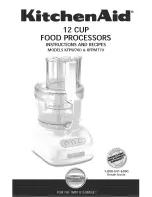
Chapter 4
Register Descriptions
© National Instruments Corporation
4-29
VME-MXI-2 User Manual
When HIGH[7:0] > [range]
≥
LOW[7:0], a
MXIbus cycle within the range maps to the
VMEbus, while a VMEbus cycle out of that
range maps to the MXIbus.
When LOW[7:0] > [range]
≥
HIGH[7:0], a
VMEbus cycle within the range maps to the
MXIbus, while a MXIbus cycle out of that range
maps to the VMEbus.
When HIGH[7:0] = LOW[7:0] = 0, the window
is disabled.
When FF (hex)
≥
(HIGH[7:0] = LOW[7:0])
≥
80
(hex), all VMEbus addresses are mapped out to
the MXIbus.
When 7F (hex)
≥
(HIGH[7:0] = LOW[7:0]) > 0,
all MXIbus addresses are mapped in to the
VMEbus.
To accommodate 8-bit devices that write to the
VWRx registers, the window is not enabled until
the lower byte is written. Therefore, 8-bit
masters should write the upper byte first, then the
lower byte. This bit is cleared by hard and soft
resets.
13-10
0
Reserved
These bits are reserved. Write a 0 to each of
these bits when writing the VMCR.
9
DSYSFAIL
Drive SYSFAIL*
Writing a 1 to this bit causes the VME-MXI-2 to
assert the VMEbus SYSFAIL* line. This bit is
cleared by hard and soft resets.
8
DSYSRST
Drive SYSRESET*
Writing a 1 to this bit causes the VME-MXI-2 to
assert the VMEbus SYSRESET* line for a
minimum of 200 ms. This bit is automatically
cleared after the assertion of SYSRESET*.
7-1
0
Reserved
These bits are reserved. Write each of these bits
with 0 when writing to the VMCR.
Artisan Technology Group - Quality Instrumentation ... Guaranteed | (888) 88-SOURCE | www.artisantg.com
















































